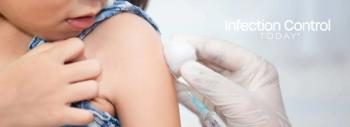
How to Use an Alcohol-Based Handrub
How to Use an Alcohol-Based Handrub
Hand hygiene is the single most important action that can helpreduce the spread of infection in hospitals. However, some 2 millionhealthcare-associated infections (HAIs) occur each year accounting for nearly90,000 deaths annually. Approximately one-third of these infections may beprevented by good hand hygiene on the part of healthcare workers. Other causesof HAIs may include housekeeping practices, more acutely ill patientpopulations, and antimicrobial resistance, etc. Current literature documentsunacceptably low levels of hand hygiene among healthcare workers approximately 40 percent to 50 percent.
Q: What are the most common reasonsfor healthcare workers lack of compliance with handwashing?
A: There are a number of reasons thatimpact healthcare workers compliance to handwashing:
- Lack of easy accessibility to sinks
- Handwashing causesdry, irritated hands
- HCWs are too busy
- Handwashing takes too much time
- Lack of knowledge on when hand hygiene should take place, including casual contact, before and after gloving, etc.
Q: How can hand sanitizers supplementproper hand hygiene?
A: Designed to promote new strategiesfor improving hand hygiene practices based on scientific data and evidence, theCenters for Disease Control and Prevention (CDC) issued a revised Guideline forHand Hygiene in Healthcare Settings which authorizes the use of alcohol-basedhand sanitizers as the preferred method of hand hygiene; that is, superior tosoap-and-water washing when hands are not visibly soiled. The CDC legitimatedalcohol-based hand sanitizers because it recognized that the efficacy of alcoholsanitizers was greater than soap and water, that the requirement of traditionalsoap-and-water handwashing was difficult during a busy hospital day, and thathealthcare workers were more likely to use hand sanitizers which are accessible,fast, and more gentle on hands.
Alcohol can prevent the transfer of healthcare-associatedpathogens, according to the CDC. In one study, gram-negative bacilli weretransferred from a colonized patients skin to a piece of catheter materialvia the hands of nurses in only 17 percent of experiments after using anantiseptic handrub with an alcohol-based hand rinse. In contrast, transfer of theorganisms occurred in 92 percent of experiments after handwashing with plainsoap and water. This experimental model indicates that when the hands ofhealthcare workers are heavily contaminated, an antiseptic handrub using analcohol-based rinse can prevent pathogen transmission more effectively than canhandwashing with plain soap and water.
Alcohol-based products also are more effective for standardhandwashing or hand antisepsis by healthcare workers than soap or antimicrobialsoaps, according to the CDC. In all but two of the trials that comparedalcohol-based solutions with antimicrobial soaps or detergents, alcohol reducedbacterial counts on hands more than washing hands with soaps or detergentscontaining hexachlorophene, povidone-iodine, 4 percent chlorhexidine, ortriclosan.
In studies examining antimicrobial-resistant organisms,alcohol-based products reduced the number of multi-drug-resistant pathogensrecovered from the hands of healthcare workers more effectively than didhandwashing with soap and water.
Q: How do hand sanitizers fit into abusy healthcare workers handhygiene regimen?
A: Sanitizers are easily accessible at the bed side, at the doorway, or as personal carriage. They are fast-acting,killing germs in as little as 15 seconds.
Q: What are the most pervasivemisconceptions related to the CDCs hand-hygiene guidelines related to alcoholhandrubs and why?
A: HCWS think that since sanitizers arealcohol-based, they are drying to hands when in fact, the opposite is true.Alcohol-based hand sanitizers are less drying and irritating to hands than soapand water. Sanitizers contain emollients to moisturize hands, whereas soapscommonly remove the moisture from the skin. According to the CDC, in severalrecent prospective trials, alcohol-based rinses or gels containing emollientscaused substantially less skin irritation and dryness than the soaps orantimicrobial detergents tested.
Q: How is an alcohol-based handsanitizer best used?
A: When using an alcohol-based handrub,apply a dime-sized amount of product into the palm of one hand and rub handstogether, covering all surfaces of hands and fingers, until hands are dry. Thisusually takes 15 seconds or less.
Q: Why is an alcohol-based handsanitizer a great way to boost residual kill rates/times?
A: According to data first published in HospitalEpidemiology and Infection Control, 2nd Edition (1999)and contained in the CDCs hand-hygiene guidelines, alcohol-based handrubs arebetter than handwashing at killing bacteria. Numerous studies have documentedthe in vivo antimicrobial activity of alcohols, as they effectively reducebacterial counts on the hands. Typically, log reductions of the release of testbacteria from artificially contaminated hands average 3.5 log10 after a30-second application and 4.0 to 5.0 log10 after a one-minute application. In1994, the FDA TFM classified ethanol 60 percent to 95 percent as a Category Iagent (i.e., generally safe and effective for use in antiseptic handwash orhealthcare worker handwash products). Alcohols are rapidly germicidal whenapplied to the skin, but they have no appreciable persistent (i.e., residual)activity. However, regrowth of bacteria on the skin occurs slowly after use ofalcoholbased hand antiseptics, presumably because of the sub-lethal effectalcohols have on some of the skin bacteria, according to the CDC. Alcohols, whenused in concentrations present in alcohol- based handrubs, also have in vivoactivity against several nonenveloped viruses. For example, 70 percentisopropanol and 70 percent ethanol are more effective than medicated soap ornon-medicated soap in reducing rotavirus titers on fingerpads.
Newsletter
Stay prepared and protected with Infection Control Today's newsletter, delivering essential updates, best practices, and expert insights for infection preventionists.






